

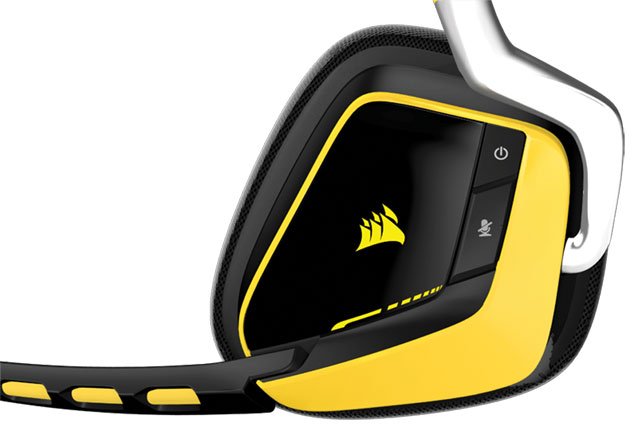
Disclosure: Corsair provided us with a Corsair VOID RGB for the purpose of this review.
Earlier this year and Gamescom, Corsair revealed a new set of gaming peripherals - the STRAFE RGB MX Silent mechanical keyboard, SCIMITAR MMO gaming mouse, and VOID RGB gaming headset. The VOID RGB is the first of the three to market, and the product we're taking a look at today. Having reviewed several of Corsair's previous hardware, we have high expectations for their latest headset.
The VOID RGB headset is available in several different models. All share the same overall design, build quality, 50mm neodymium drivers, RGB lighting effects, microphone, and physical audio controls. Where they largely differ is their connectivity, as well as the option between stereo and Dolby's simulated surround sound. First in the pack is the $70 VOID Stereo powered via a 3.5mm analog cable, and is the only one compatible with devices other than a computer. Next in line is the VOID USB Dolby 7.1 at $100. And finally the VOID Wireless Dolby 7.1 and VOID Wireless Dolby 7.1 SE - Yellowjacket Edition retail for $130 and $150 respectively, the latter of which is sold exclusively at Best Buy in the United States.
The model we were sent was the special edition of the VOID Wireless. Its key defining features are a black and yellow color scheme and the inclusion of a base station extender to increase the reach of the USB transmitter. As suggested above, many of the opinions herein should be applicable to rest of the lineup. The one that's right for you will ultimately depend on the wants of your setup.
Despite our sample being called the Yellowjacket Edition for its colors, it's an appropriate title in general due to the momentum inspired by the VOID's physical attributes. The angles of its oversized, asymmetrical earcups sleek forward like the abdomen of that predatory wasp. The impression is further maintained by the headband's connecting arms, which attach and wrap around the earcups from behind.

Much of the headset is made from sturdy, matte plastic. The earcups' sides have harder, reflective black plates from which the VOID's RGB lighting brightly shines through the company's logo and accenting lines. The effects can be customized with 16.8 million colors and a variety of different tones and pulses. They're not visible to you while you're wearing the headset, of course, and they do drain the wireless battery faster when enabled, but they may have some use in LAN or clan settings where each person could have different identifying effects.
Housed on the left earcup is the non-removable microphone. It can be flexed inward with a bit of force - I initially missed this feature as the amount required is more than you expect, so don't be afraid to really pull it - and it holds its vertical place well. The microphone, dubbed infoMic, also has two LED indicators at its tip inform you of battery, mute, and equalizer status. It's an interesting idea, but not all its conveyed information is visible peripherally. Thankfully, the headset produces an audible beep to deliver much of the same information.
Elsewhere on the left earcup sit a number of audio controls. Between the plate and boomerang-shaped lower curve are the microphone mute and wireless models' power buttons. On its underside is the CUE Control dial, which manages volume with a simple flick. Pressing the dial inward can cycle between five equalizer presets, default or custom, and holding it in toggles Dolby 7.1 on and off. They're all fairly large and within easy reach. My only complaint is that the mute button is seated somewhat loosely. That leaves it with a discernible wobble if you're moving your head, though it's not much of a concern once the action starts.
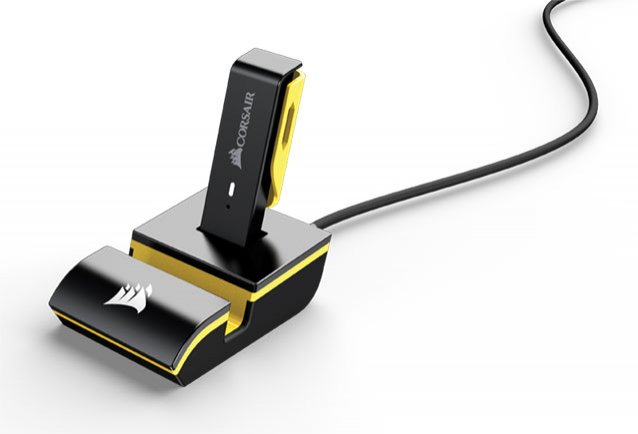
Unlike our terrifying insect friends, the VOID is notably large. The width of its cans and thick padding leave it protruding a good distance. But what's surprising is that even with its heavy profile, the VOID is anything but. In fact, this may be the most light and comfortable headset I have ever worn. The earcups leave plenty of room for the ears to breath, and the memory foam padding covered in mesh fabric is soft and doesn't at all get warm with use. At times I even forgot I was even wearing a headset.
The size of the earcups do leave gaps in the fit for sound to escape or enter, however. As a result, noise isolation isn't the best. But if you want to drown out the world, the VOID is more than capable. These cans can be driven with an emphasis on loud. You may want to start off with a low value of 6 to 12 out of 100, values I even use for general gameplay, lest you blow your ears out.
The VOID's sound quality is as impressive as its volume. Every foot step, gun shot, and screaming G.I. in Battlefield 4 and Call of Duty: Black Ops 3 is heard clear and impactful. Its guttural, enjoyable bass only enhances that action, especially when raised with the Bass Boost setting. Furthermore, its cans deliver a decent soundstage that's not too in-your-face as is often the case with close-backed headsets and headphones, offering a solid amount of depth to the proceedings.
And speaking of depth, this is where the USB and wireless models' Dolby 7.1 really make things fun. The simulated surround sound adds to the immersion by separating directional sources quite accurately. It was easy to pinpoint the sources of the conflict around me which, in addition to its sound stage, made battlefields feel that much more larger. Taken altogether, the VOID is one of the better performers in terms of audio deliverance from a gaming headset.
It was nice not being distracted by cables or signal interference, either. Nearly every wireless gaming headset I've used over the last year and a half, if not all of them, suffered from an audible hiss when powered by their own batteries. Sometimes it was soft, other times loud, but it was always an irritating presence. That's not the case with the VOID Wireless. Its audio arrives over its 2.4GHz signal flawlessly.
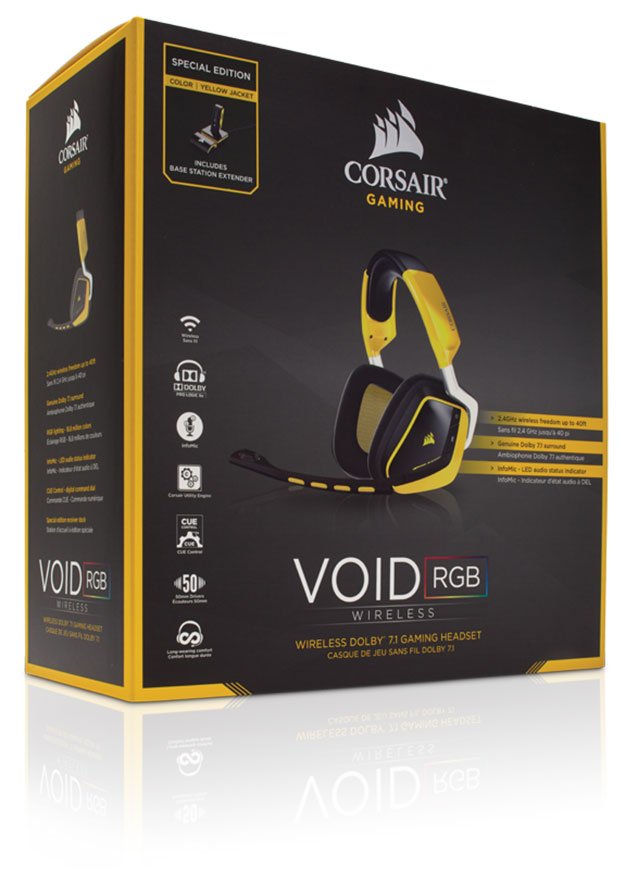
Corsair advertises that the VOID Wireless' freedom is good for up to 40 feet. It never lost transmission when moving around my open office space, though traveling to other rooms separated by walls naturally limits its reach. Its battery lasts a good number of hours, too. After moderate use for more than a week and a half, with lighting effects disabled to extend its life, the battery has only need infrequent charging. Less than two hours after attaching its USB charging cable, it was back to full capacity.
The brain behind the curtain is once again the Corsair Utility Engine (CUE) software. It's stable and simple to use, with a good deal of customization within. On the Audio tab, you can adjust microphone and sidetone levels, enable or disable Dolby 7.1, and select or edit the five equalizer presents (Pure Direct, Bass Boost, FPS Competition, Clear Chat, and Movie Theater). Finally, the Lighting tab gives you control over the InfoMic's brightness, mute and battery status intervals. You can also adjust the brightness and select and customize 12 different effects for the headset's RGB lighting.
Corsair's VOID lineup, particularly the Wireless Dolby 7.1 gaming headset we were sent, is a show stopper. There are few headsets that sound and feel this good for $70 to $150. And if they iterate on what they currently have with the VOID, perhaps a model with both wireless and analog capabilities, then its few competitors may very well become none.

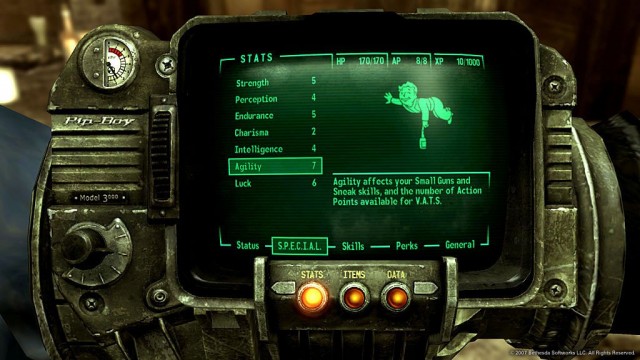


 Top 10 Most Wanted Indie Games of 2011
Top 10 Most Wanted Indie Games of 2011 Taylor Swift tops the DoSomething.orgs 2014 Celebs Gone Good list
Taylor Swift tops the DoSomething.orgs 2014 Celebs Gone Good list Fallout 4 Guide: How To Get A Hazmat Suit With +1000 Radiation Protection
Fallout 4 Guide: How To Get A Hazmat Suit With +1000 Radiation Protection 8+ Great Gift Ideas for PlayStation 4 Owners
8+ Great Gift Ideas for PlayStation 4 Owners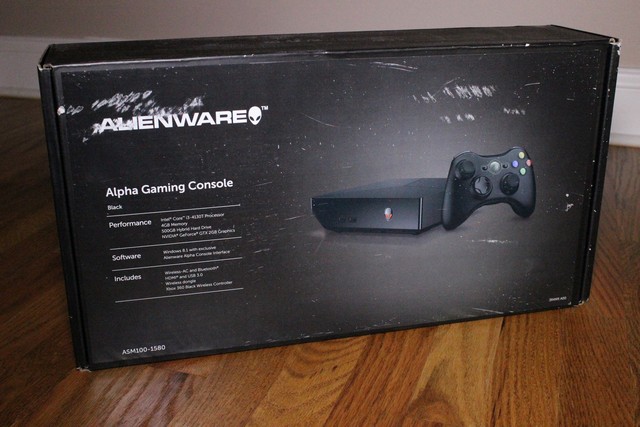 Alienware Alpha Review And Giveaway
Alienware Alpha Review And Giveaway